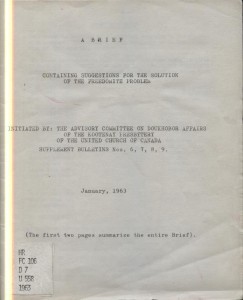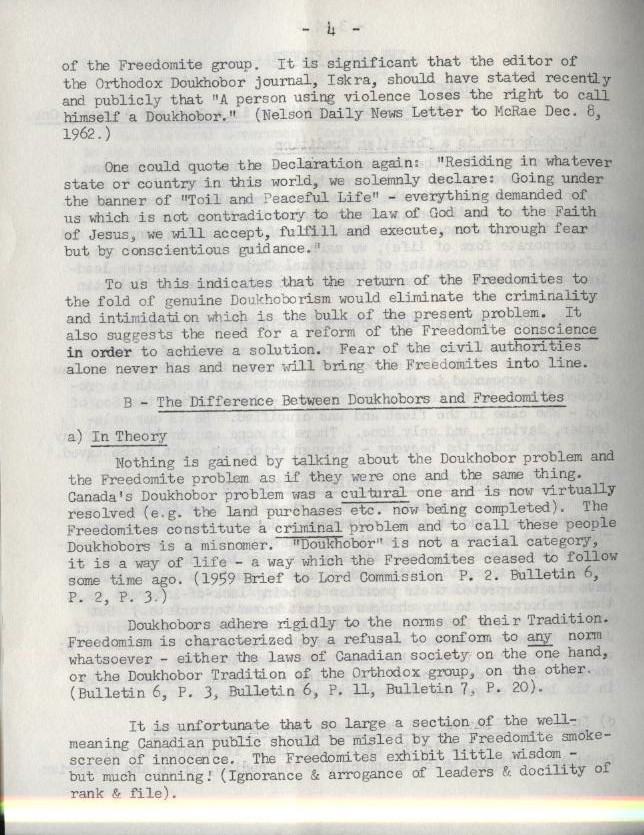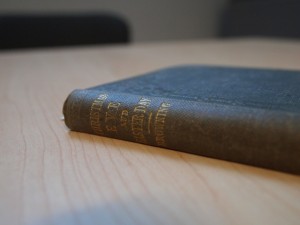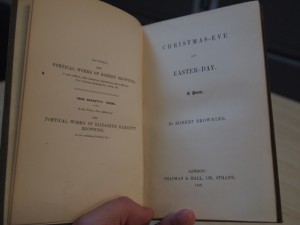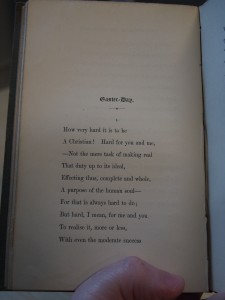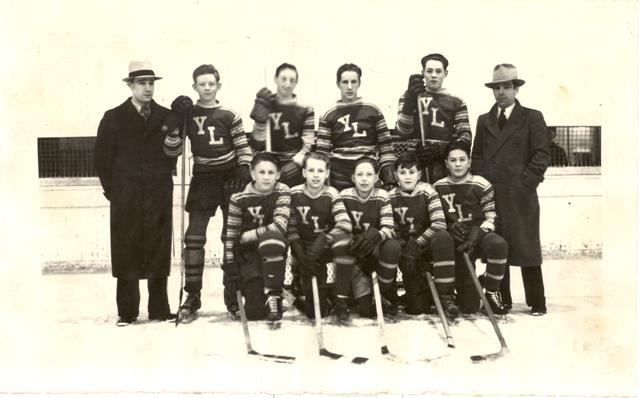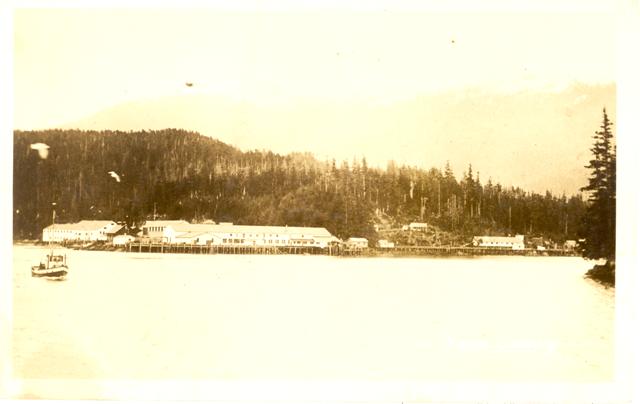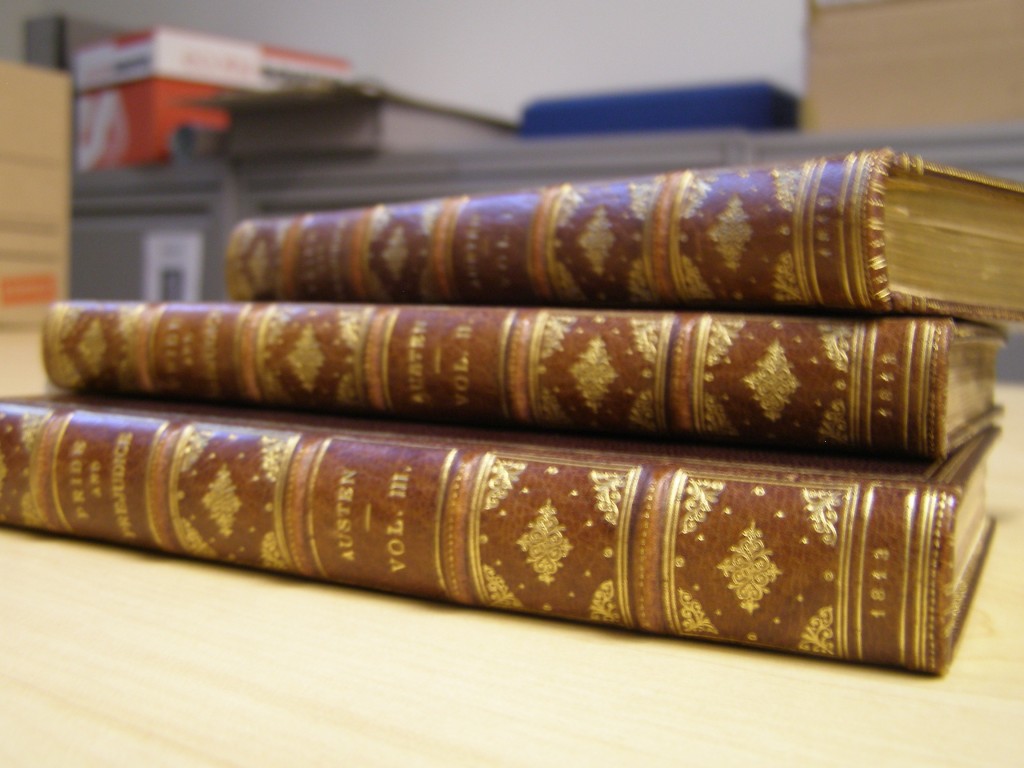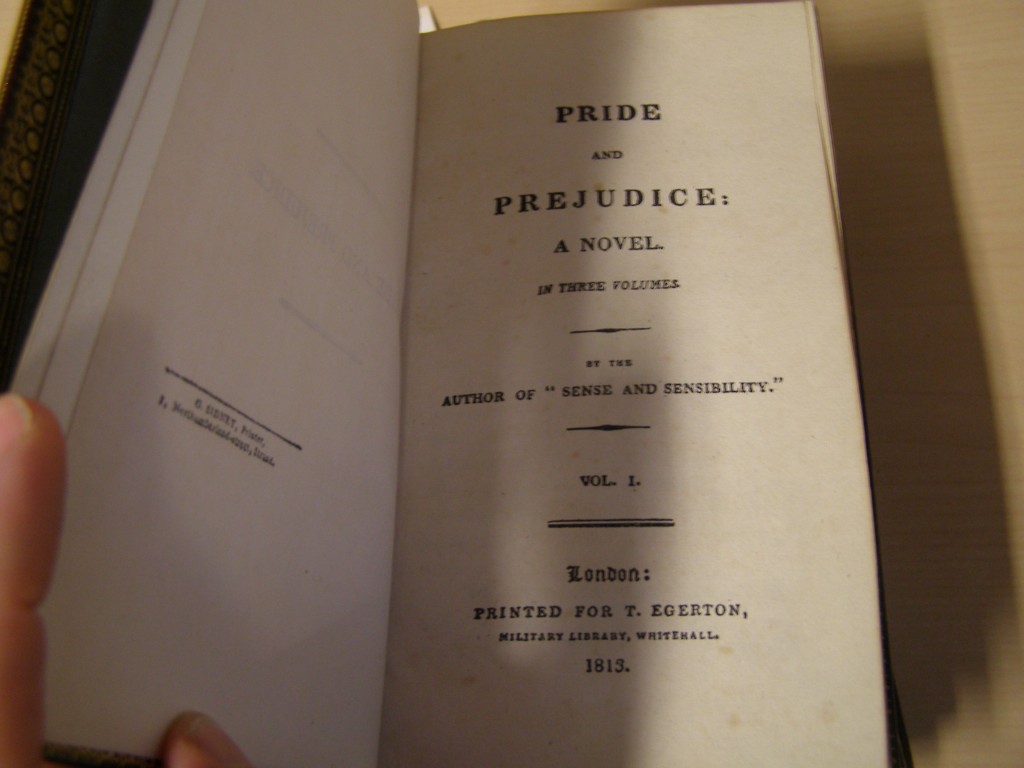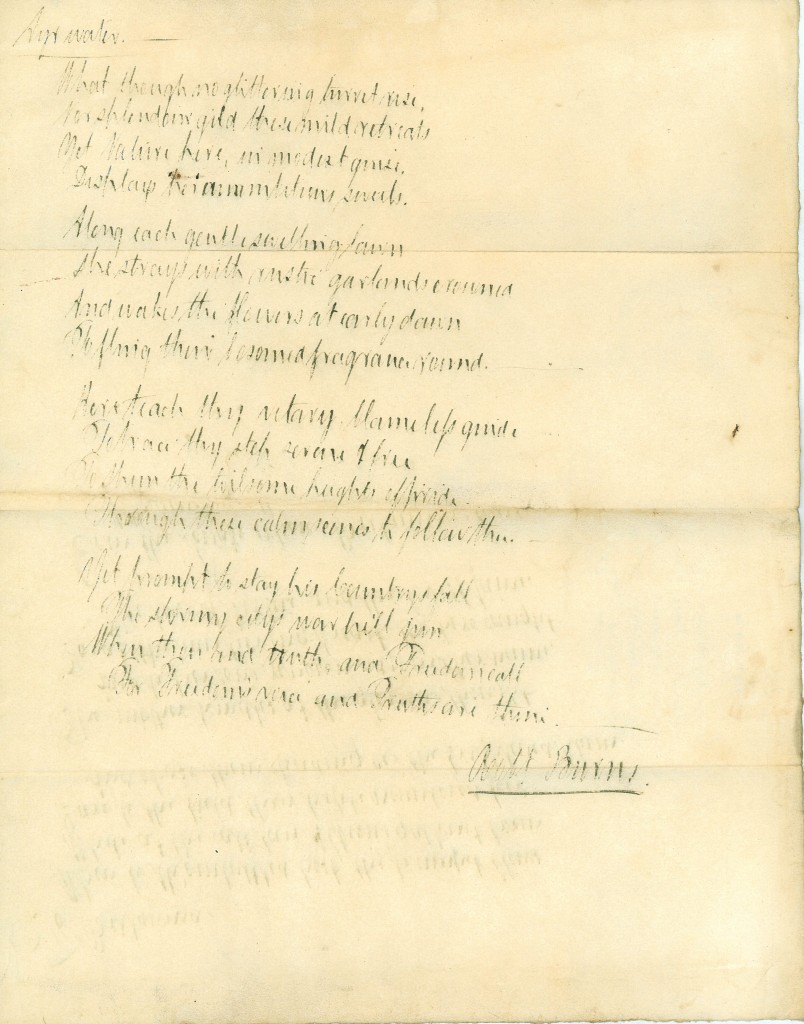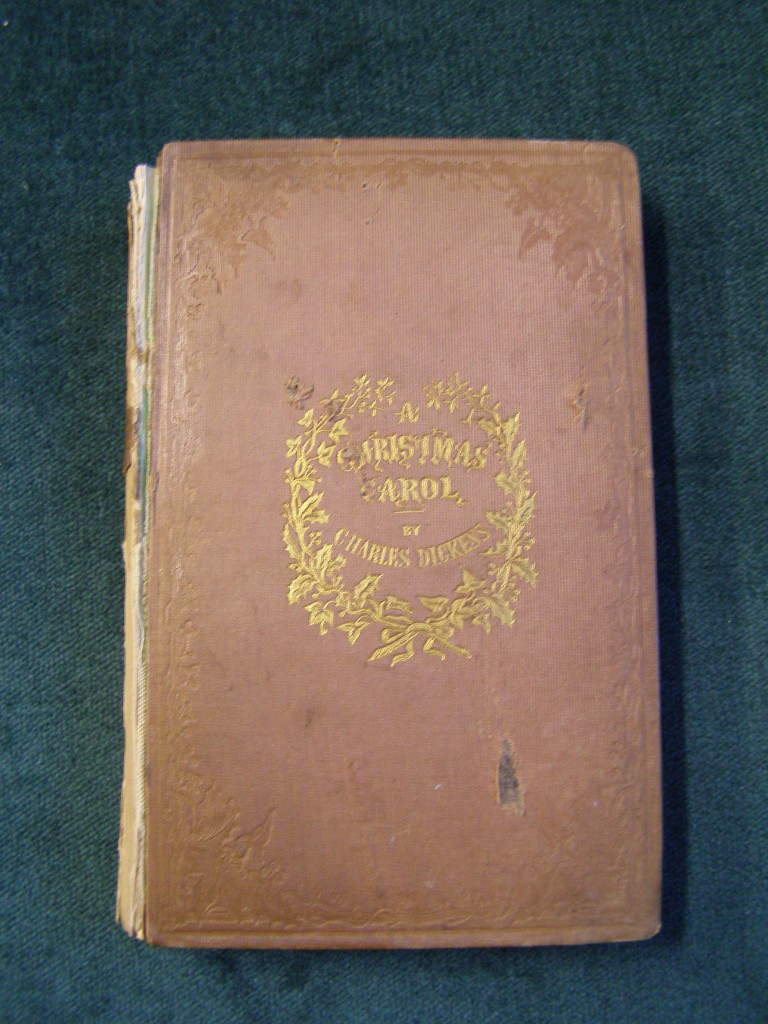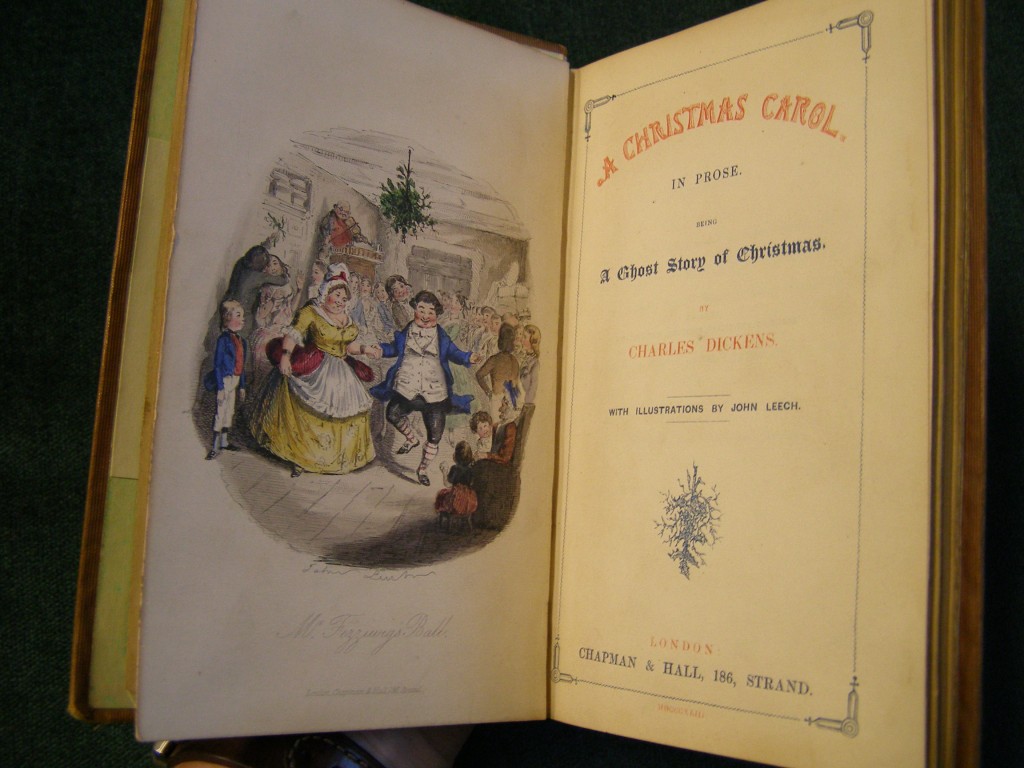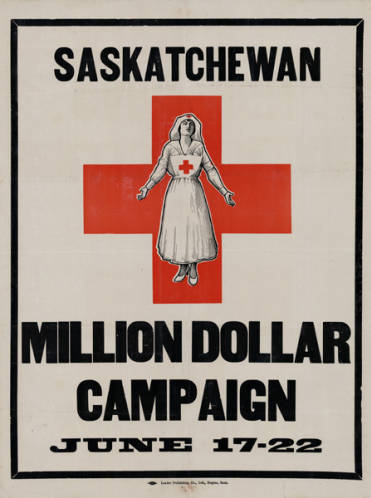Have you been missing our Featured Place posts as much as we’ve missed writing them? It’s a new year and we’re looking forward to featuring lots of B.C. places in 2013! For those new to our blog, this post is part of a series in which we find resources from Rare Books and Special Collections relating to B.C. places that are used as room names in the Irving K. Barber Learning Centre.
The Allison Harbour Room in the Barber Centre is room 263, one of the group study rooms in the south hallway. Allison Harbour the place, according to B.C. Geographical names, is a harbour in the Queen Charlotte Straight, as well as a marine park. If you search the library catalogue for the phrase “Allison Harbour” and specify Rare Books and Special Collections, you get no results. If you search our website for the same, which is a strategy for searching our finding aids for specific references in our archival collections, you get one result, which is a file of articles about Allison Harbour, written by Gilean Douglas. Douglas was a poet, author and journalist who lived and worked in coastal B.C. from the 1940’s until her death in 1993. She describes Allison Harbour at the time of writing, probably the early 40’s:
“Four years before I saw it Allison Harbour was an old logging float, with sagging buildings which had been a house, store and shed. Melville and Victor Eckstein, who live there, say that in a few more years Allison will be one of the finest trading posts upcoast and they’ve gone a long way towards proving it. But right then they and an old trapper were the only residents, with space and solitude all around them.” (Gilean Douglas, “Allison Harbour on the Make,” File 2-11, Gilean Douglas fonds.)
Supposing you wanted to find more about Allison Harbour. This is a situation when starting out with a secondary source might give you more keywords to search for. Both B.C. Geographical Names and Wikipedia mention that Allison Harbour was formerly known as False Bay or False Schooner Passage. Our website search comes up with a couple of photographs of False Bay, and a catalogue search finds a map (False Schooner doesn’t find anything). But beware- there is more than one False Bay! One of the photographs is more likely taken in the False Bay off of Nanaimo (here is a digital version of it) and another is in South Africa. The map is of the Clayoquot Sound district, showing (yet another) False Bay. False Bay has turned out to be a false lead!
Here are some other ideas for continuing this search:
– Depending on what aspect of Allison Harbour you are interested in, you might use other clues from the secondary sources to form a search. For example, B.C. Geographical names says it was “named after Mr. Allison, manager of logging operations for the Smith-Dollar Lumber Company, circa 1922.” You could search for the Smith-Dollar Lumber Company if that was of interest to you. Or if you are interested in the marine park, you could search for collections or publications that have to do with B.C. parks more generally. Douglas’s articles also contain other descriptions and clues about this (apparently) little known B.C. place.
– You can expand your search geographically. Now that we know Allison Harbour is in the Queen Charlotte Straight, you could use that as your search phrase to find maps, charts, publications and documents about the area in general.
– One of the beautiful things about digitization is that OCR (Optical Character Recognition) technology allows you to full-text search a lot of scanned documents, whereas pre-digitization we relied only on the catalogue or finding aid. You can search UBC’s digital collections, or try the B.C. Historical Newspapers page for full-text searching possibilities.
Of course, no single library or archives can hold all possible information about any place or subject- it’s important to use other catalogues too. You can search the UBC Library Catalogue across all branches and online resources through Summon. You might also try MemoryBC, a database which brings together archival descriptions from across the province.
Happy 2013 and happy researching!
